- Home
- Fishing Tips
- Fishing Line Tip
A Fishing Line Tip that will Save You Money...
Fishing gear isn't cheap, which is why the first fishing line tip is to do with buying it economically. Not in 100m spools that is, but by weight - or spools of 1,000m or more.
For example a quarter pound spool of good quality 15lb breaking strain monofilament will contain around 900yds of line and will cost around $9, whereas a 100yd spool of the same stuff can cost about $5.
And the greater the quantity, the better the deal. A 3lb spool of top quality 50lb mono will contain over 3,000yds of line and will cost around 75 bucks.
Bulk spools have to be the way to go for your main reel line, don't they?
But we're not just looking at monofilament line here. There are a couple of other types of fishing line to think about - braid line, fluorocarbon line and copolymer line. Let's take a look at them ...
Monofilament Fishing Line Tips
In Its Favour ...
- It's less expensive than either braid or fluorocarbon line;
- Its elasticity makes it a good shock absorber to help prevent a fish from tearing itself free of the hook;
- It's transparent to a degree, being much less visible in the water than braid, but more so than fluorocarbon line;
- Knots and crimped connections hold well in nylon monofilament line;
- Nylon monofilament has a low memory, so it will soon forget about the coils it was restrained in on the spool;
- Nylon monofilament is a moderately abrasion resistant material.
Not So Good ...
- Its elasticity works against it when you're trying to make the longest possible cast, because it absorbs energy that would be better utilised to power-up the rod. Shock leaders for casting should always be made from low-stretch 'leader grade' varieties specifically produced for this application;
- It's prone to ultra-violet degradation from direct sunlight;
- It's absorbent in saltwater to a small degree, which weakens it over time.
Best Uses for Monofilament Fishing Line
- As a good general purpose main reel line;
- As a shock absorber leader when using non-stretch braid lines.
Braid Fishing Line Tips
In Its Favour ...
- It has near zero stretch, which is great for bite detection;
- Its near zero stretch enables the angler to control lure action when jigging and spinning;
- It has an amazing strength/diameter ratio which means you can get an awful lot of it on the reel;
- Its small diameter enables it to fly through the air with ease, for prodigious distance casting.
- Its small diameter enables it to cut through the water better than mono, allowing deeper trolling and faster deep-drop jigging;
- Braid line has no reel memory whatsoever.
Not So Good ...
- It's so thin and hard it can cut fingers to the bone. Be careful!
- It's hard on the rod's line guides. Use it only on rods with roller guides or silicon-lined rings intended for use with braid lines;
- Its near-zero stretch means that it has no shock absorbing properties whatsoever. It's hard on the angler's arms and shoulders, and on the fish's mouth too;
- All braid line are very visible in the water, particularly when seen from below and silhouetted against the sky;
- Only a few knots will work well in braid lines - have a look at these braided fishing line knots to learn how to tie the ones that will;
- It doesn't cast well from baitcast reels. Its small diameter means it can (and will) jam between the underlying coils, resulting a short cast if you're lucky and a birds nest and a crack-off if you're not!
- A fixed spool reel is a much better alternative for casting braid lines due to the way in which their Oscillating Line Lay Mechanism distributes successive coils of line across the spool;
- And yes, you've guessed it - it's expensive!
Best Uses for Braid Fishing Line
- As a main reel line for surfcasting, where its small diameter will aid long casting and its non-stretch will register even the lightest bite at the rod tip;
- For both downtide - and especially uptide - ledgering from an anchored boat, where its small diameter will offer minimal resistance to the tide and enable lighter weights to hold bottom;
- Any form of lure casting, where the angler needs to be in direct contact with the lure to influence its action by twitching and jerking the rod tip;
- Deep-drop jigging, where its low water resistance will enable the lure to flutter back down quickly after each upward sweep of the rod.
Fluorocarbon Fishing Line Tips
In Its Favour ...
- It's almost invisible under water;
- It's a low stretch line material;
- It's denser than water and sinks readily;
- It doesn't absorb water like mono does, and keeps its strength longer as a result;
- It's slightly stiffer than mono, and less likely to tangle;
- It has good abrasion resistance;
- It has relatively high resistance to ultra-violet light
Not So Good ...
- It's expensive, more than double the price of standard mono;
- It has a relatively high line memory, which means that casting distances can be affected;
- It shouldn't be used with topwater poppers, as its tendency to sink will affect the action of these lures
Best Uses for Fluorocarbon Fishing Line
- For hook traces and terminal rigs;
- For low-visibility leaders when trolling, spinning, baitcasting, saltwater fly fishing or jig fishing;
- For non-stretch shock leaders when long, high-energy casting is necessary.
Copolymer Fishing Line Tips
Think of copolymer fishing line as a hybrid between monofilament and fluorocarbon lines. It's less visible and thinner than mono, but not as invisible as fluorocarbon - but it is easier to handle.
In short, it's a hi-tec mono/fluorocarbon compromise that's particularly suited to beach fishing and other applications where long casting is required.
and finally ...
When you have to discard worn-out fishing line, do so with care.
If you just bin it, it will end up on a landfill site where it will ensnare birds and cause them a lingering death.
What I do is coil it around my fingers, then remove it and cut through the coil once with a pair of scissors. Then snip it lengths of not more than an inch or so. You can then bin it with a clear conscience.
And incidentally - nothing to do with fishing this, well not directly - but you know those plastic rings that hold 4 packs and 6 packs of beers? They are lethal to wildlife. So always, but always, cut through the rings so no bird, fish or animal can get caught in them.
There - personal rant and fishing line tips are now over!
Recent Articles
-
Sea Fishing Rods and Reels Must Be Compatible for a Balanced Outfit
Mar 08, 21 08:30 AM
A quality reel fitted to a quality rod doesn't necessarily make it a quality outfit. Your fishing rods and reels have to be properly matched if you're to get the best out of them, and here’s how -
Essential Lure Fishing Tips That All Saltwater Anglers Should Know
Mar 08, 21 04:51 AM
Which single lure fishing tip applies to trolling, jigging, baitcasting, spinning, fly fishing and any other branch of lure fishing? Well, it is the one at the top of this list -
Vital Jig Fishing Tips That You Really Cannot Afford To Miss!
Mar 07, 21 10:20 AM
Essential jig fishing tips to help you select the right lure for successful jig fishing, together with the techniques required to get the most out of your jig fishing outfit
















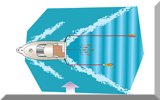

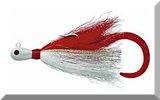
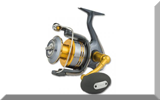
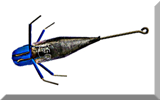
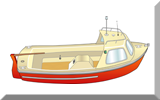
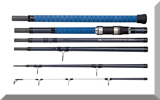
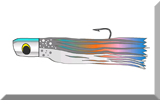
New! Comments
Have your say about what you've just read! Leave me a comment in the box below.